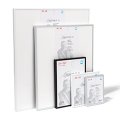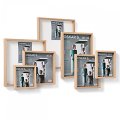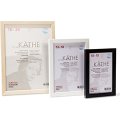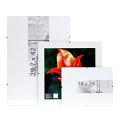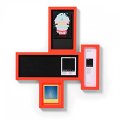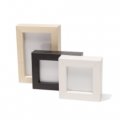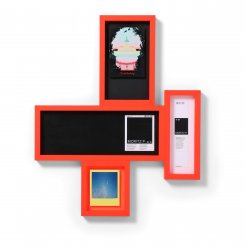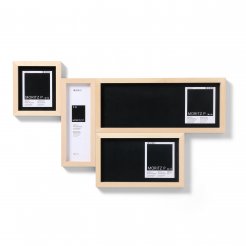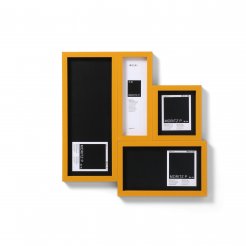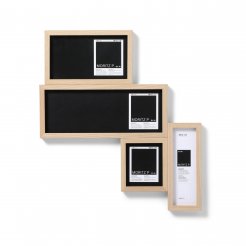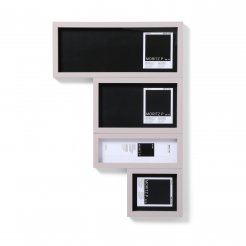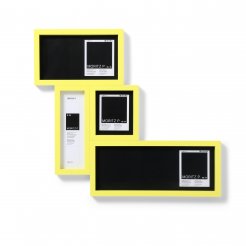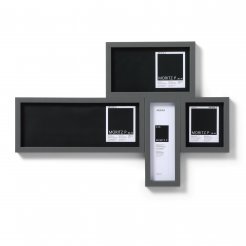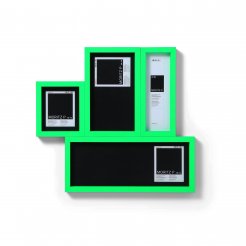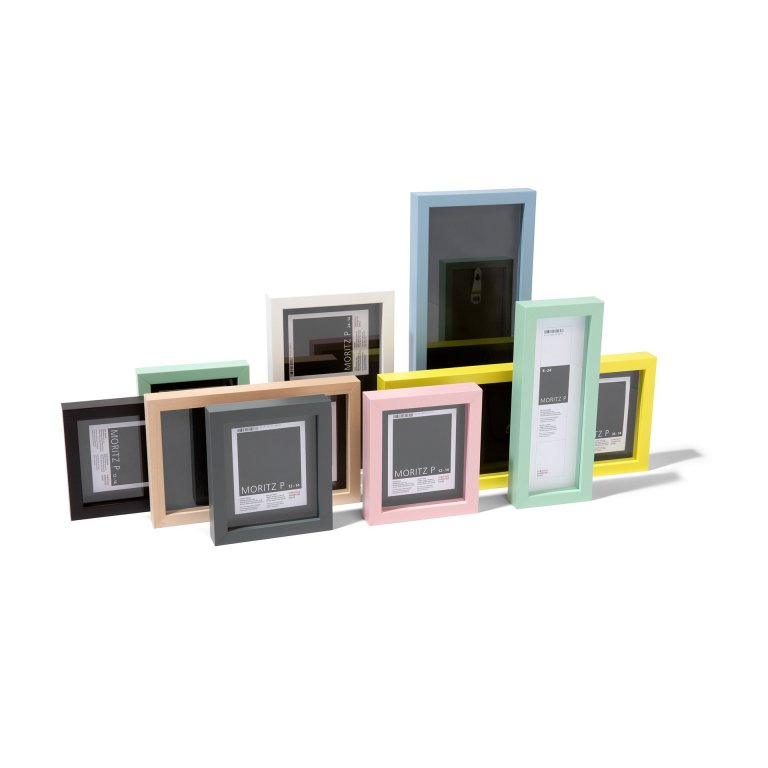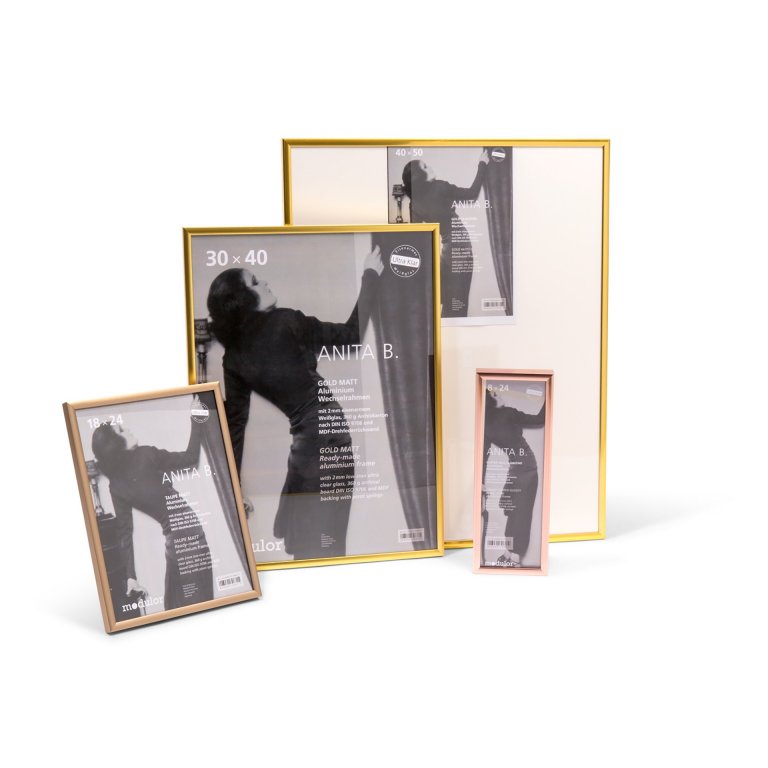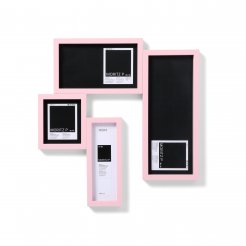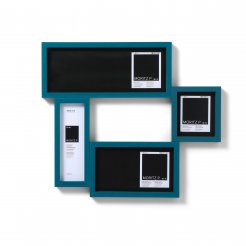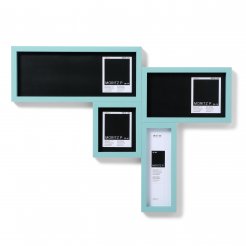Buy Polaroid picture frame
Find the perfect picture frame for Polaroids, small objects and other photo formats.
Polaroid frames: We love Polaroids
Polaroid? Back to the future? YES! Today, when we all send dozens of photos into the airwaves in a matter of seconds and have even cranked through various filter and editing programs on our mobile devices, the great longing for the real thing comes over you? For real people, real salad (instead of always only on Insta) and real photos, for example, that you can touch? We feel the same way! Polaroid is back and has never really been gone, and we are definitely one of those who could celebrate it all the time. Why? Very simple: We love Polaroids. Like no other analog photo, the Polaroid condenses the moment in its own unique way into a literally unique photo that you can touch, but that still seems fleeting and alive. Like visions from another world that elude the linguistic. You know exactly what we mean and you get goose bumps? Then you've come to the right place, because we have it: the perfect Polaroid picture frame.
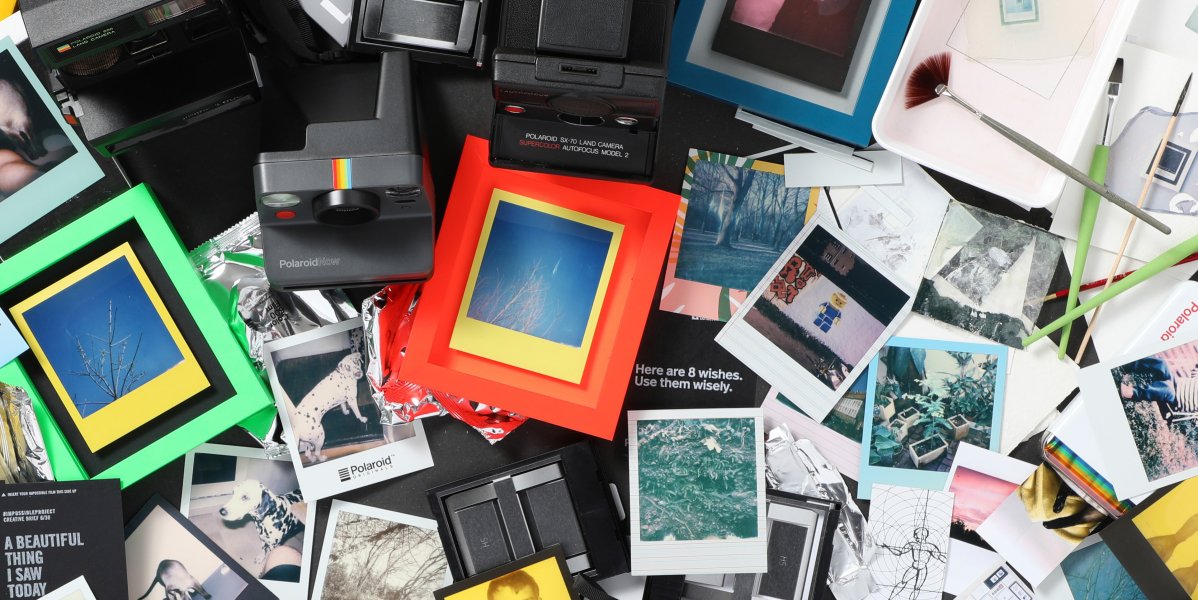
Polaroid picture frame: Dimensions & Co.
The right picture frame for your Polaroid
Our perfect Polaroid picture frame should have a format that does justice to the iconic primal instant image of all instant pictures with the classic format 8.8 cm x 10.7 cm including the white Polaroid border. Hm... Not so easy, because the Polaroid picture frame of our dreams should also be versatile enough to be used for thousands of other small photos, pictures and objects. However, we find regular standards like 20 x 20 cm much too large. But we also don't want you to get claustrophobic in the ideal Polaroid picture frame we dreamed of. In a slide-in frame the size of the Polaroid, it will be too narrow for us and for the photo. Pretty high expectations for such a small picture frame.
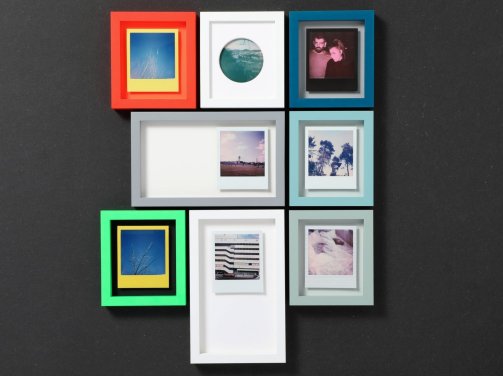
Framing one Polaroid perfectly
In the end we decided on 12 x 14 cm and thus found the perfect size - at least we think so. This is how he was born: our moritz p. P? Of course, P for Polaroid. (but also, just between us: P for passport photo!)
With 1.5 cm rotation around the Polaroid, there is enough room to breathe. At the same time, the compactness of the frame always guides the eye directly into the heart of the photo. This way, the Polaroid in particular retains its unique suction effect in this picture frame. In addition, moritz p comes with a wooden spacer bar of 10 mm, making it a three-dimensional object frame and thus also offering enough space for a floating mounting with or without passepartout and for the confetti rain of the last party.
Because we like the format so much, we have also introduced it in our new aluminum frame Anita B.
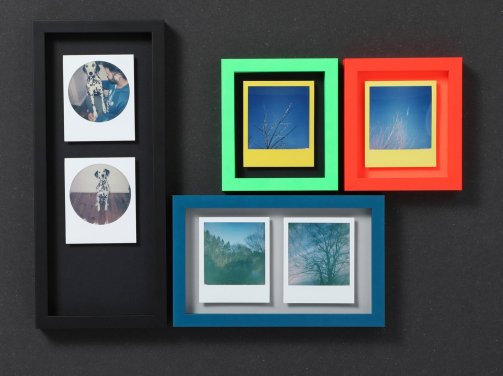
Framing two Polaroids perfectly
If you want to frame not only one but two Polaroids next to each other, our moritz p in the size 24 x 14 cm is the right picture frame. In this format you can frame two Polaroids side by side in landscape and portrait format.
In the "2" Polaroid picture frames you can alternatively frame single Polaroid photos in a so-called "large optical center". The large optical center is the position of the photo in the frame that has the same distance to the edge on the right, left and top, but a wider one towards the bottom. This position gives the framing lightness and makes it look very noble. We therefore also like to use this format for postcards in portrait format.
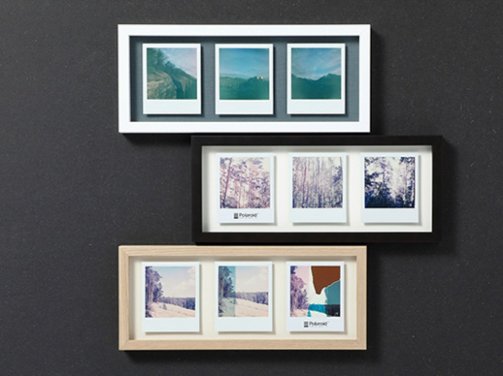
Frame three Polaroids perfectly
If you want to frame three Polaroids next to each other, we have the largest format of moritz p in 36 x 14 cm, the perfect Polaroid picture frame for you. The montage of 3 pictures has a very strong narrative power, whether as a sequence of several snapshots of that one afternoon at the lake last July (remember when we were still allowed to go out?) or as a combination of three photos of completely different places and moments that may have nothing else to do with each other. When they are placed in relation to each other, a completely new narrative emerges.
Hang Polaroid picture frames
With our different Polaroid picture frames you can combine many individual photos. We like to call such small groups of arranged formats and colors à la Petersburger Hängung also Montage-Hängung, because you can constantly rearrange the different Polaroids in their individual picture frames. If you combine different colors and formats with each other - but also with other frames - you can create a real eye-catcher in no time at all, bringing color and good mood into your home.
Colored frames for your Polaroid treasures
To make it as difficult as possible for you to choose and to have finely tuned picture frames for your Polaroids, e.g. for special edition films or monochrome photos, we have come up with many colors for moritz p. Whether high or low contrast, over-present and in-your-face or rather reserved. We have more than 20 pretty good colors that you might like even without a photo. And then 4 more colors at Anita B! We like colorful. Can you tell?
By the way: the untreated linden can be stained 1A and the white Polaroid picture frame is perfect for painting, e.g. with spray paint. If your desired color is not yet available, take a look at our spray paints and wood stains. Don't forget to share your masterpiece on Insta with us, just post it with #modulormacher and #moritzp We are curious!
You have color suggestions or wishes? Always give them to us!
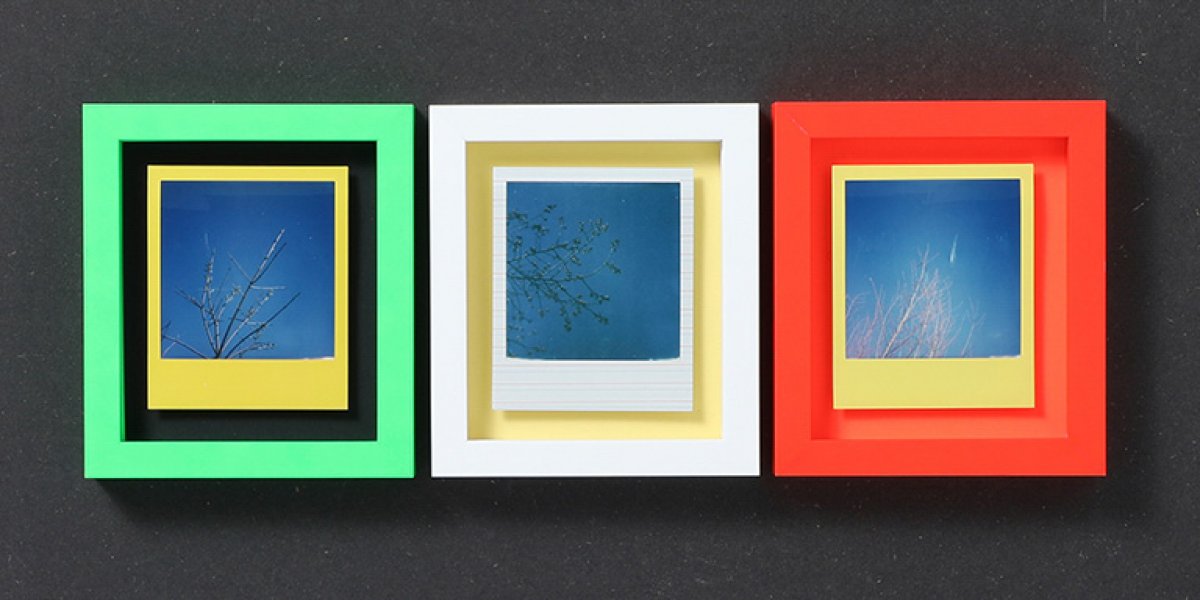
Tips for Polaroid photography
Falls bei Dir zuhause in Foto- und Schatzkisten, am Kühlschrank oder in dieser einen Chaos-Schublade noch keine Polaroids rumliegen, die Du schon immer mal in einen unserer Polaroid Bilderrahmen einrahmen wolltest – gar kein Problem. Polaroid ist wieder voll da und hat gerade vor Kurzem die neueste Kamera auf den Markt gebracht, die Polaroid Now. Klein, handlich, stets dabei, und das auch noch echt bezahlbar.
Wir finden ja, Polaroid Kameras sind im Einsatz jedes Mal für eine kreative Überraschung gut, und dafür lieben wir sie. Deshalb kommen hier jetzt noch die aus unserer Sicht wichtigsten Besonderheiten beim Fotografieren. Experimentier drauf los und hab Spaß an den Überraschungen, die Du mit Deiner Kamera herstellst – wir warten hier in der Zwischenzeit schon mal mit vielen bunten Polaroid Bilderrahmen auf Dich.
Light? Light!
First and foremost, because it cannot be said often enough: Polaroid cameras and therefore Polaroid photos love LIGHT. Therefore: Find the sun! In the shade or on cloudy days you should also use the flash outside and for indoor photos always use it anyway, even if it "feels" bright. Polaroid estimates the range covered by the flash at 1 - 2.5 m. But there's one thing you should never forget when you're out in the sun: Backlight is the only light that Polaroids do not like at all...
An insiders' tip from Polaroid, which produces great results: In the morning and evening, the sun's incidence of light is still relatively flat, so these are the best times for wild photography.
Distance to subject & focus
The distance corridors of the lenses should be strictly adhered to. The mechanical controls for close-up and landscape shots will remain active for the next photo if you don't reset them, which can mean a dark end for whole movies. Believe us, we have proven this in a self-experiment (and cried bitterly).
One of the biggest sources for blurred photos is often the shattering pressing of the shutter release. Therefore: keep calm and press the shutter at the end of exhalation. Remember: the more light the camera has available, the shorter the exposure and the aperture has to be opened and the less "time" the shot has to become blurred and out of focus.
The pocket trick
It's not new, but we tested it and found it good: the pocket trick. In the lower edge of the Polaroid is a chemical cocktail, which is spread over the image by two metal rollers during ejection and develops it. You can support this development by immediately bringing the newborn baby into a warm environment when you shoot at low temperatures - and into a slightly cooler environment when you shoot in summer. The ideal temperature corridor is between 13° and 28°C. It's best to put the fresh photo in your trouser or jacket pocket, where it's usually dark, because the photo is also sensitive to light for a moment.
By the way, you don't have to be afraid: a Polaroid doesn't break that quickly. Even though Polaroids have the talent to fill even the hardest motifs with fragility, which seem to come from dreams and magic. The photo can take it. We have also tested it.
